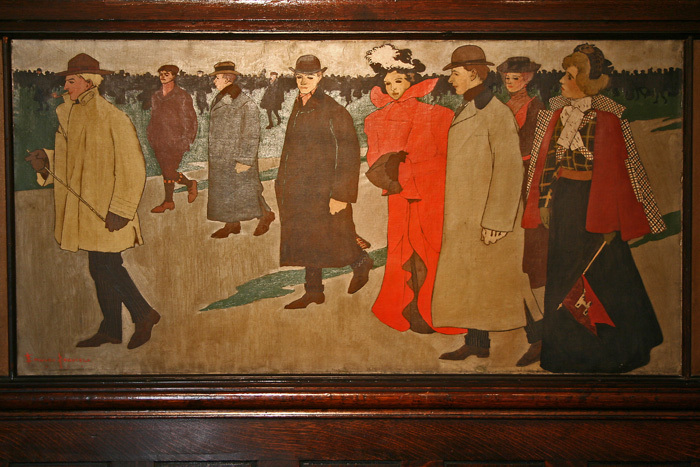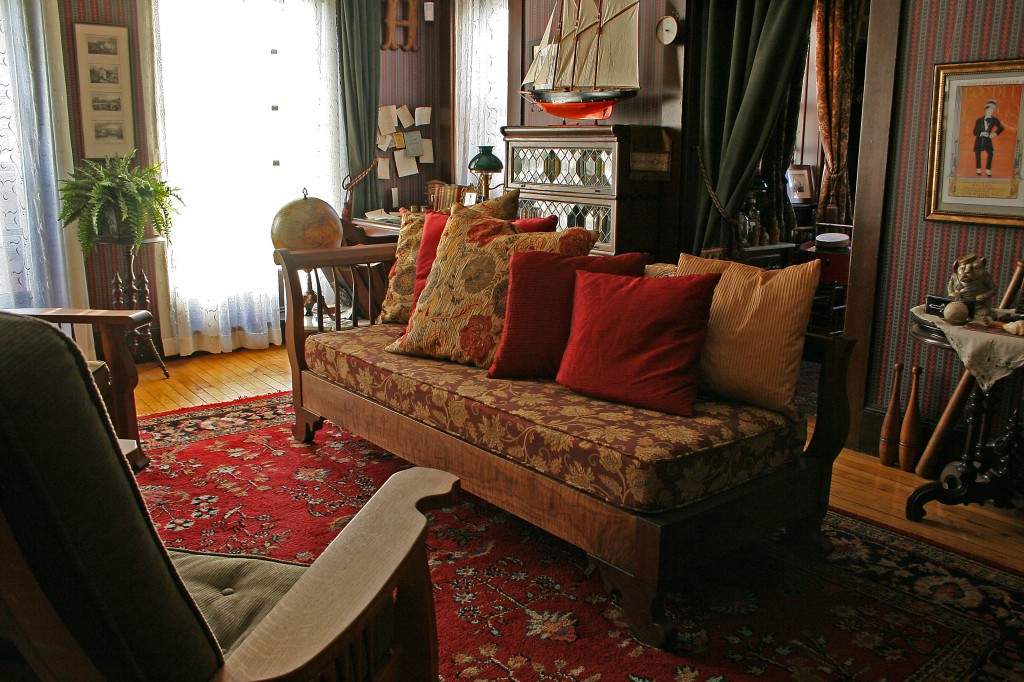 I was at the Suite yesterday, the day after Thanksgiving, beginning what’s going to be a three-month intensive effort to catalog the objects in the collection for inclusion in our new Internet museum. I was working away contentedly at Lathrops’ desk for an hour or so, when just before twilight, I realized that for the last few minutes I had been idly eyeing the room. Perhaps it was Thanksgiving-dinner-post-partum, or else simply the distraction of the hour; whichever, I noticed that the late afternoon light was casting lovely patterns of sun and shadow about the room, and so decided my time might be better spent with a camera.
I was at the Suite yesterday, the day after Thanksgiving, beginning what’s going to be a three-month intensive effort to catalog the objects in the collection for inclusion in our new Internet museum. I was working away contentedly at Lathrops’ desk for an hour or so, when just before twilight, I realized that for the last few minutes I had been idly eyeing the room. Perhaps it was Thanksgiving-dinner-post-partum, or else simply the distraction of the hour; whichever, I noticed that the late afternoon light was casting lovely patterns of sun and shadow about the room, and so decided my time might be better spent with a camera.
It’s been a while since we’ve taken still photos for the blog, and I think you’ll agree this was indeed the golden hour.
Above: craftsman Lary Shaffer’s latest and second-to-last last creation for the Suite, the new daybed, takes pride of place in the study. (Double click on any image to expand; these are but thumbnails.) Lary and I reverse-engineered this piece from a tiny, grainy photo over a period of six months, and I’ll be doing a future post on how this magnificent creation came together. In the meantime, it’s easy to appreciate how the rich walnut and plush fabrics add to the Victorian elegance (not mention comfort!) of the room – especially when you compare these views to those taken in April 2010.
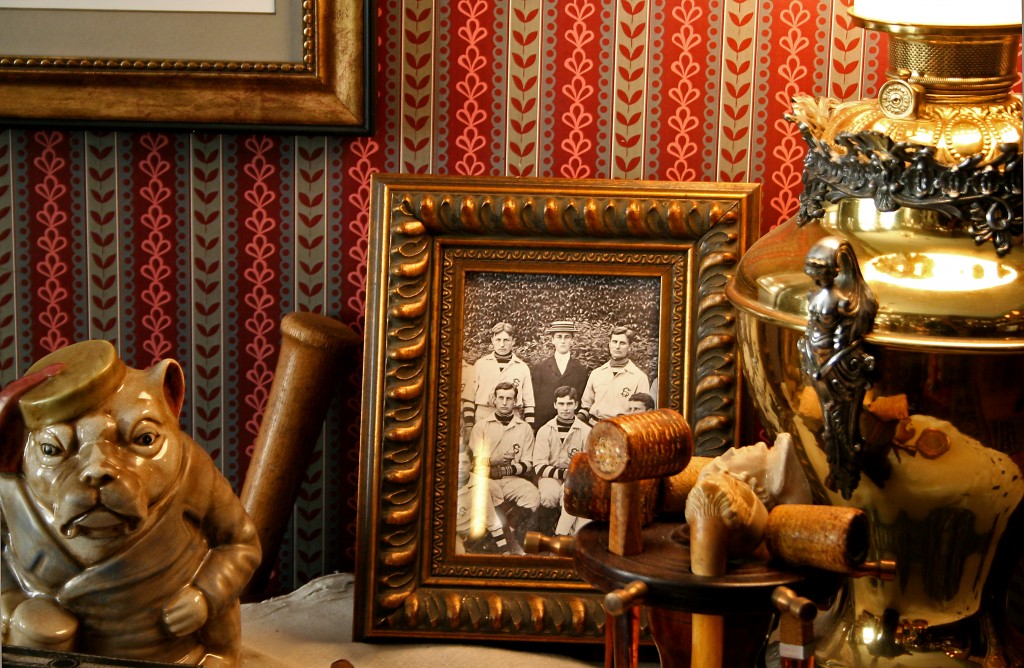 Above: On the smoking table, young Frank at Groton, 1899, next to “Uncle Ned’s dog tobacco jar” and our collection of pipes.
Above: On the smoking table, young Frank at Groton, 1899, next to “Uncle Ned’s dog tobacco jar” and our collection of pipes.
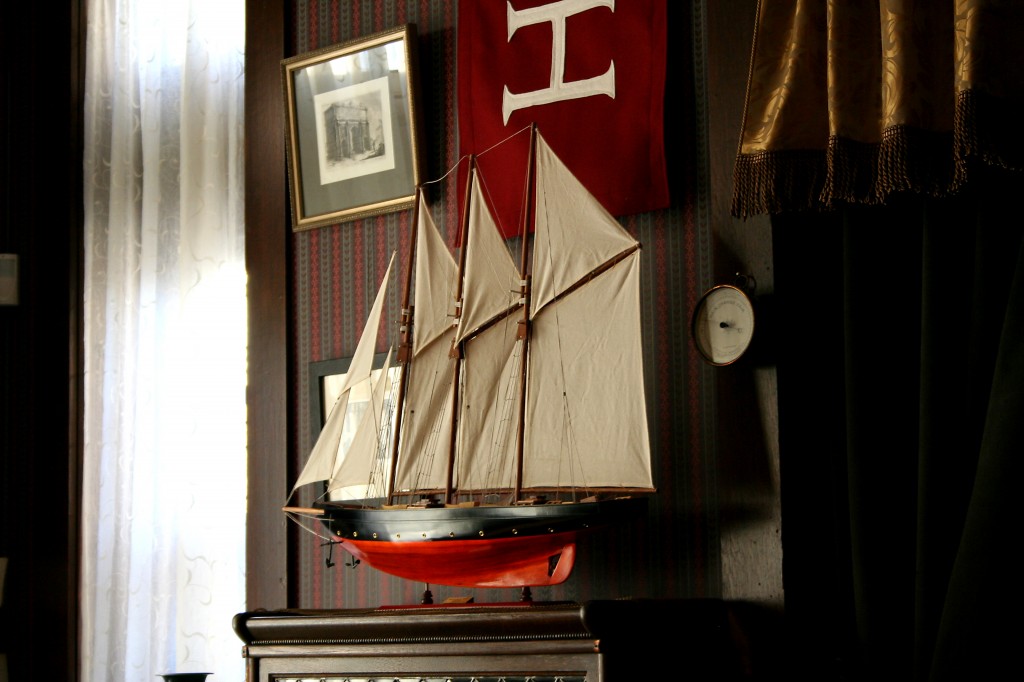 The Atlantic of 1903, record-holder extraordinaire, looking ready to sail at a moment’s notice.
The Atlantic of 1903, record-holder extraordinaire, looking ready to sail at a moment’s notice.
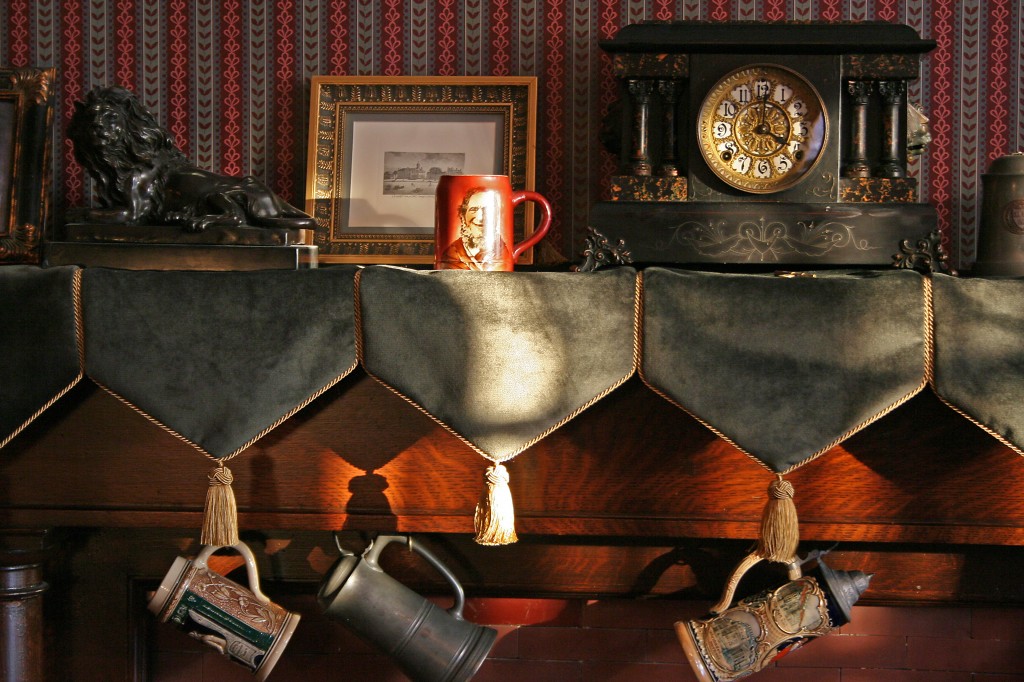 Our exceedingly rare John the Orangeman mug caught in a golden beam on the mantle. Immediately behind is a recently acquired etching of Harvard Yard in the 1840s.
Our exceedingly rare John the Orangeman mug caught in a golden beam on the mantle. Immediately behind is a recently acquired etching of Harvard Yard in the 1840s.
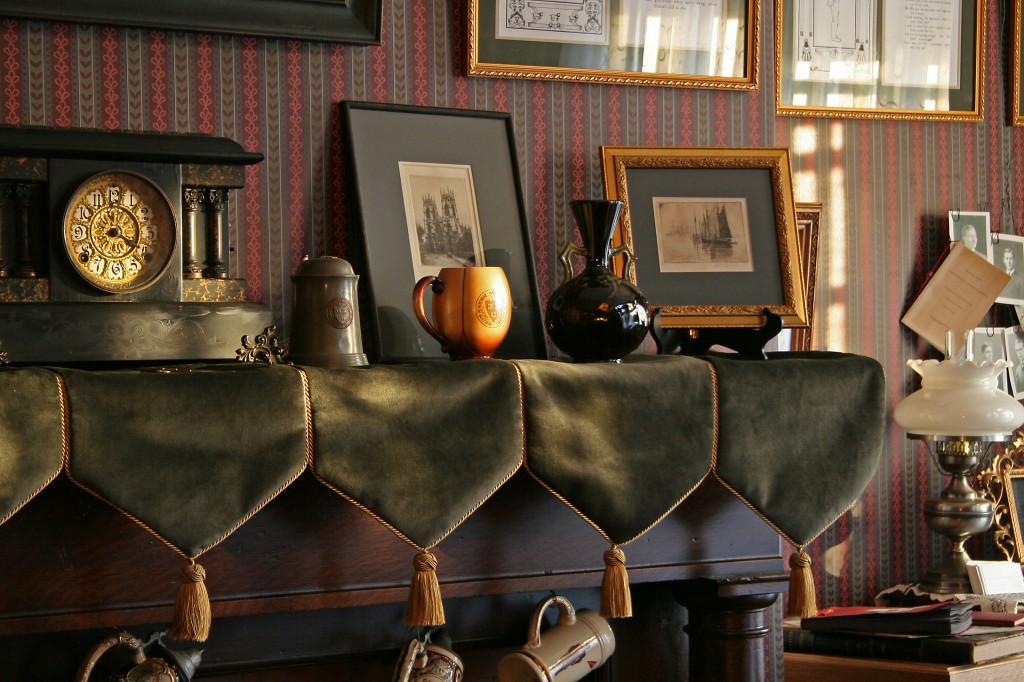 Another mantle view, this time with the light catching our Harvard football mug, and the 1904 stein recently gifted to the Foundation, already looking right at home.
Another mantle view, this time with the light catching our Harvard football mug, and the 1904 stein recently gifted to the Foundation, already looking right at home.
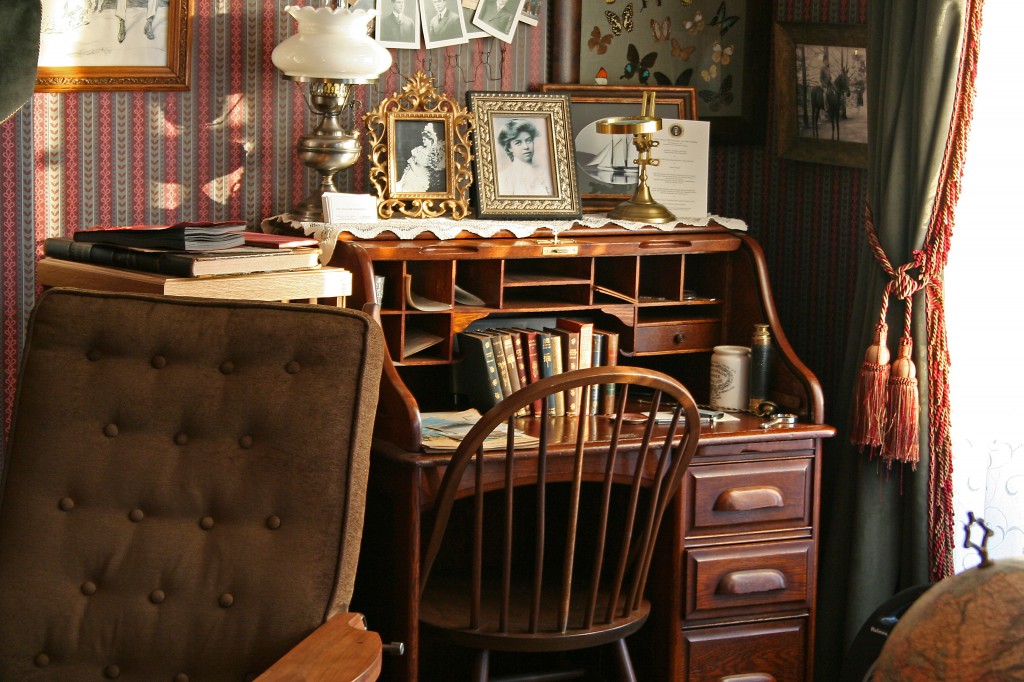 FDR’s desk glowing in the sunlight. When this inventory project is finished, you’ll be able to click on any of the above objects to learn their individual history, and how that particular piece relates to other pieces in the collections, as well as to the history of the Suite as a whole. For instance, that large volume sitting on top the revolving bookcase? That’s not just any book, it’s the 1900-01 bound edition of the Harvard Crimson, where FDR’s soon to become a reporter. And that young lady next to Eleanor, why that Alice Sohier and of course you know how that affair went… Ah, and then there’s the elegant Half Moon II… How fortunate to have your own yacht in the harbor… Given that there are currently well over one thousand objects to classify and digitalize, this isn’t going to be the quickest project in the world, and we will require substantial help – in fact, thanks to a recent pledge of support, we’ve already hired two student researchers half-time during Harvard’s new Winter Session. But given how far we’ve come, I have no doubt we’ll get there, especially with help from viewers like you!
FDR’s desk glowing in the sunlight. When this inventory project is finished, you’ll be able to click on any of the above objects to learn their individual history, and how that particular piece relates to other pieces in the collections, as well as to the history of the Suite as a whole. For instance, that large volume sitting on top the revolving bookcase? That’s not just any book, it’s the 1900-01 bound edition of the Harvard Crimson, where FDR’s soon to become a reporter. And that young lady next to Eleanor, why that Alice Sohier and of course you know how that affair went… Ah, and then there’s the elegant Half Moon II… How fortunate to have your own yacht in the harbor… Given that there are currently well over one thousand objects to classify and digitalize, this isn’t going to be the quickest project in the world, and we will require substantial help – in fact, thanks to a recent pledge of support, we’ve already hired two student researchers half-time during Harvard’s new Winter Session. But given how far we’ve come, I have no doubt we’ll get there, especially with help from viewers like you!
| Come Make A Little History. Support the FDR Suite Foundation! |
|
|

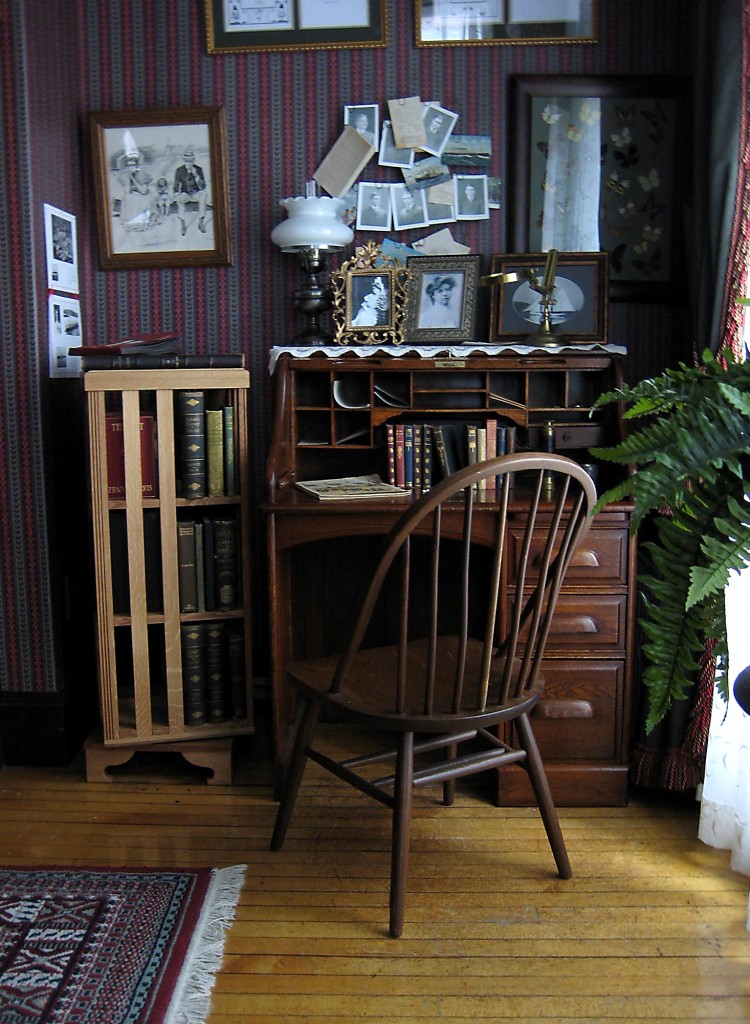
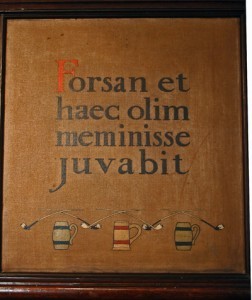
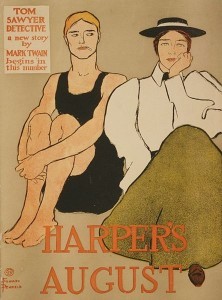 Edward Penfield
Edward Penfield 


